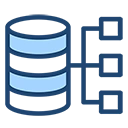Database schema for employee management system
Designing a database schema for an employee management system involves identifying the entities and relationships involved in managing employees. Below is a basic example of a database schema for an employee management system.
Entities:
Employee:
- EmployeeID (Primary Key)
- FirstName
- LastName
- DateOfBirth
- Gender
- PhoneNumber
- HireDate
- DepartmentID (Foreign Key referencing Department table)
- Position
- Salary
- SupervisorID (Foreign Key referencing Employee table for the supervisor)
Department:
- DepartmentID (Primary Key)
- DepartmentName
Address:
- AddressID (Primary Key)
- EmployeeID (Foreign Key referencing Employee table)
- StreetAddress
- City
- State
- ZipCode
Attendance:
- AttendanceID (Primary Key)
- EmployeeID (Foreign Key referencing Employee table)
- AttendanceDate
- ClockInTime
- ClockOutTime
LeaveRequest:
- LeaveRequestID (Primary Key)
- EmployeeID (Foreign Key referencing Employee table)
- LeaveStartDate
- LeaveEndDate
- LeaveType
- Status (e.g., pending, approved, rejected)
PerformanceReview:
- ReviewID (Primary Key)
- EmployeeID (Foreign Key referencing Employee table)
- ReviewDate
- ReviewerID (Foreign Key referencing Employee table for the reviewer)
- Rating
- Comments
This schema covers the basic entities needed for an employee management system. Here are some explanations:
- Employees have personal information, including their position, department, salary, and supervisor.
- Departments help organize employees into different functional units.
- Addresses store information about an employee's residence.
- Attendance tracks the daily clock-in and clock-out times of employees.
- Leave requests allow employees to request time off, and the system can track the status of these requests.
- Performance reviews are associated with employees and include details like the review date, reviewer, rating, and comments.
Depending on the specific requirements of your employee management system, you may need to expand or modify this schema. Consider additional features such as training records, skills, certifications, or any other information relevant to your organization.

